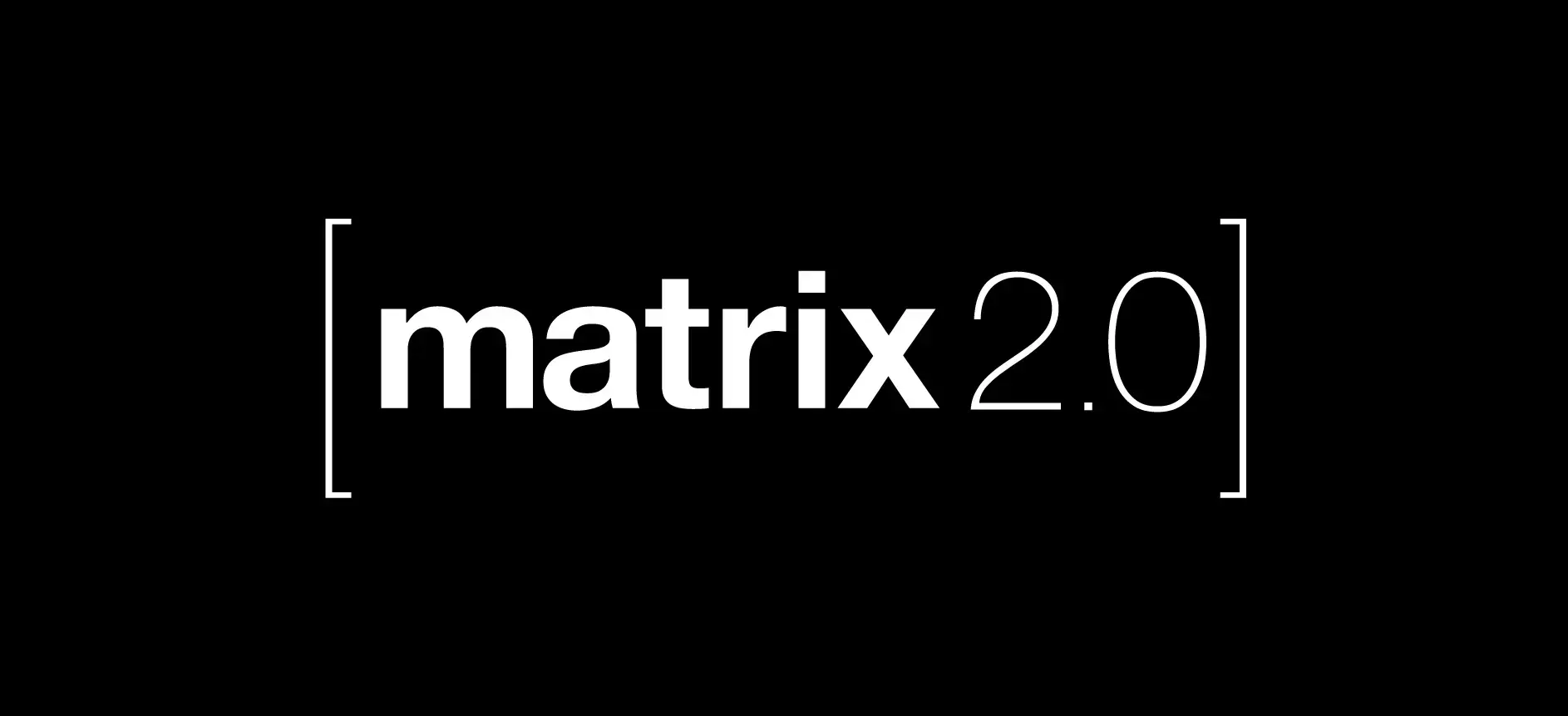- cross-posted to:
- [email protected]
- [email protected]
- cross-posted to:
- [email protected]
- [email protected]
Highlights include Sliding Sync (instant login/launch/sync), Native OIDC (industry-standard authentication), Native Group VoIP (end-to-end encrypted large-scale voice & video conferencing) and Faster Joins (lazy-loading room state when your server joins a room).



Okay, help an old-timer out.
Lemmy :: Reddit
Mastodon :: Twitter (I refuse to call it “X”)
Matrix :: ???
Is it like discord? The olden days of AIM/ICQ/IRC?
Featureset-wise it falls somewhere between IRC and Discord.
I will get shit for writing that, but Matrix in its current form shouldn’t have seen the light of the day, nor should have been let to spread with close to no technical scrutiny and based on empty promises/hype like it did.
Just to be clear, I’m absolutely encouraging, in fact, actively promoting federated alternatives to things like WhatsApp, Messenger, Signal, Telegram, …
But I don’t believe for a second that the foundations on which Matrix is built make sense, can be made to work well in practice, nor represent a problem worth spending so much time and effort solving. This article does a good job at introducing the “behind the scenes” of the protocol: https://telegra.ph/why-not-matrix-08-07
The whole history of Matrix can be summarized as:
“let’s do this because it’s cool”
“shit, it’s hard/slow, but we will figure it out”
“I have a breakthrough, here comes a new version of the protocol/client/…” (the ecosystem reboots)
(rinse and repeat)
Matrix has seen more incompatible reincarnations of itself in the last 5 years than XMPP in the last 20. Arathorn, its lead contributor and evangelist will keep apologizing, promising that this time they have their stuff in order, that whatever buzzword will solve this or that aspect of the problem, while the elephant still is in the room. You practically can’t tell apart arathorn’s messages of 2015 from those of 2022 and that would be funny if it wasn’t so sad.
IMO Matrix is broken beyond repair, while XMPP is quietly used by millions of users. I wish Matrix could carry its own weight and be so unambiguously better that we wouldn’t need competing alternatives there. To me, the better XMPP is XMPP itself, and I’d be happy to elaborate on that.
I agree in theory, but in practice my experience with Matrix has been infinitely better than with XMPP:
Matrix may be technically complex, but at least it has managed to keep its ecosystem together. Whenever I’ve faced an issue with my server, all I needed to do was upgrade synapse. The “millions of users” in XMPP are mostly all on their own silos, while I am yet to have an issue where I want to chat with someone on Matrix but couldn’t because their client/server was not compatible with mine.
Yep, I’m absolutely appreciative of the good work put together by the Matrix folks on the client side, element is overall okay (although slow, quirky, unstable, …) because of fighting a misguided and unstable server and protocol.
To answer your points:
https://siskin.im/
I would argue that https://movim.eu/ is at least as good as element web. https://conversejs.org/ does the job to bridge across native clients.
What is there to set up? The experience is very comparable to Signal and al. What did you find painful?
How so? It depends on the client, but on Conversations it’s a matter of clicking on + → “Create private group chat” or “Create public channel”. In gajim it’s + → “Create group chat”
For calls to work, you need to use a stun/turn server (like everything everywhere else, including Matrix, Jitsi Meet, …). If you self-host, and you have a recent ejabberd, it’s configured out of the box and you just have to open server ports.
Another way to put it, is that matrix is technically so complex that only a single party can afford to develop and maintain a working implementation. The documentation is lacking and alternative implementations are incompatible in effect. This isn’t a sustainable situation (that those who define the standard are the ones implementing it) and we have started to see the cascading effects of that with the bitrot of the IRC bridge with libera.chat for instance.
it’s funny because I’ve never experienced that in the XMPP world where the protocol is so stable that you can just S2S/C2S with decades-old servers seamlessly, whereas failing to update synapse for a matter of weeks guarantees compatibility issues. And I’m not even talking about 3rd party implementations like conduit for which incompatibilities is a guarantee.
Not to dismiss the work of FOSS developers, but siskin seems quite primitive. It does provide the very basic functionality that you could expect from any messenger from about 10 years ago but that’s about it.
I may try to take another look, but I did have a ejabberd server that was passing pretty much all the tests in the conversations suite, but I did not manage to make calls between pidgin and conversations.
Which is kind of my beef with frustration with XMPP. There was never a whole combination of client/servers that would work consistent.
As long as this working implementation is working and it is open source with some community oversight, I don’t mind having a clear leader in the project. The alternative is this eternal push-pull of forces that we had in XMPP, where we end up with a fragmented ecosystem which is never universally accessible.
Well, yeah… but since when it is a good idea to let a server unpatched/out-of-date in the public internet?
Fair, but it does that in ways that do not deceive its users, as in, what it does it does pretty well.
As far as I’m concerned, Instant messaging was a solved problem 20 years ago, we had practically more features in Yahoo and MSN Messengers (of which XMPP was a superset, for bridging and compatibility purposes), and Whatsapp, telegram and the rest have been removing the most distracting features. What are you missing for effective communication essentially?
Are you talking about ? As far as I remember, it’s pretty upfront about testing the capability but not the implementation (because testing for things like calls is very difficult and network dependent, you won’t get the same behavior from being behind a NAT or a public IP, and the test passing is no guarantee that it will work in the wild. Even
? As far as I remember, it’s pretty upfront about testing the capability but not the implementation (because testing for things like calls is very difficult and network dependent, you won’t get the same behavior from being behind a NAT or a public IP, and the test passing is no guarantee that it will work in the wild. Even  is full of gotchas but is a good step to add to your testing).
is full of gotchas but is a good step to add to your testing).
There will never be a client nor a server that will implement all XEPs, because that’s not desirable: some fringe/IoT/obsolete cases just have no meaning nor use for most users, though there are some compatibility levels, updated regularly, that all maintained clients and developers target (e g. https://xmpp.org/extensions/xep-0479.html ). Under those circumstances you have a pretty good user experience.
But how about the implementation not working so well in practice and with enormous trade-offs, and the leader being essentially a marketing agency running for funds while covering up those trade-offs or blatantly lying about them?
Beyond the facade of new vector’s products, Matrix is as much fragmented if not more. Why would it be otherwise? Nothing is fundamentally better: there’s a spec and people chasing it. Except that in the case of Matrix, the spec is just there for reference and eventually consistent with what’s in the code of synapse running matrix.org, which is actually what matters (and might be quite different from what your server is doing for a bunch of good and bad reasons). I’ve bumped into more client to server and server to server incompatibilities hosting Matrix for few months than I did over years and years of operating XMPP. Things are just so much more stable and mature there (and slow, and boring, which users and admins alike tend to appreciate for something so central to their lives).
AFAIK, none of that existed 20 years ago and all of that are features that expected of any basic messenger.
GOTO 1. It’s the best one that we have (in practice) and it’s open source. If leadership ever becomes a real problem, it can be replaced.XMPP had that in 2002, before emojis was a thing outside japan :)
https://xmpp.org/extensions/xep-0038.html
2006: https://xmpp.org/extensions/xep-0201.html
2003: https://xmpp.org/extensions/xep-0080.html
2006 (see reactions)
Which media? You had whiteboards in 2001 (https://xmpp.org/extensions/xep-0010.html), games in 2002 (https://xmpp.org/extensions/xep-0047.html), stocks in 2003 (https://xmpp.org/extensions/xep-0067.html), rich text (beyond markup) in 2003 (https://xmpp.org/extensions/xep-0071.html), mood (https://xmpp.org/extensions/xep-0107.html), activity (https://xmpp.org/extensions/xep-0108.html), maps (https://xmpp.org/extensions/xep-0110.html), tune (https://xmpp.org/extensions/xep-0118.html), co-browsing (https://xmpp.org/extensions/xep-0151.html), calls (https://xmpp.org/extensions/xep-0166.html), serverless (https://xmpp.org/extensions/xep-0174.html)
and all those were added to XMPP because they were in widespread use in the popular messengers of that era (for the history lesson, XMPP was built first and foremost to bridge and unite all messengers). So, yeah, the trend has been going towards simplification over the years, not the opposite, and there were many many things that you could do in MSN Messenger in 2005 that you won’t be able to do in FB/WA/TG/Matrix/… :)
XMPP had all that, but there was no single application that implemented all of that. What we had was a hodge-podge of different applications, each trying to have their thing built into the standard but not really ever becoming an universal implementation. The fact that you can point to 11 (eleven!!) different XEPs as a response to “media embeds” should be a point of shame, not of pride.
I understand your defense of open standards and I’d love if the bazaar model could’ve worked for XMPP. Unfortunately, it didn’t. It is taking a Cathedral to come up and implement something that is at very least workable in all major platforms and still open for those that want to deviate from the main effort.
Is the Cathedral perfect? No, of course not. No institution ever is. But I can have my wife and my parents install Element on their phones (android or iOS) and be talking with them in less than 10 minutes, but I can not do the same with XMPP without having to accept a huge amount of compromises.